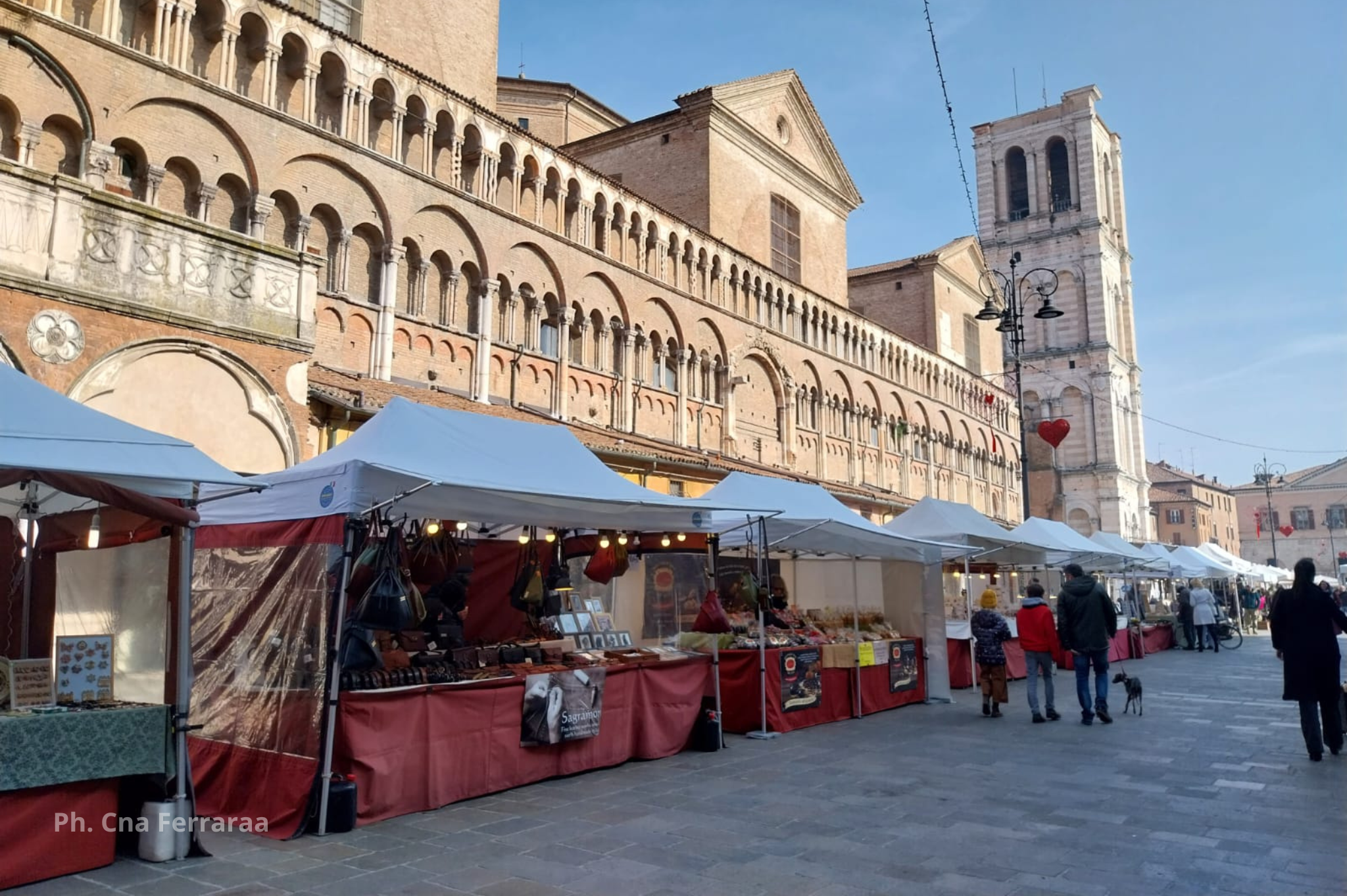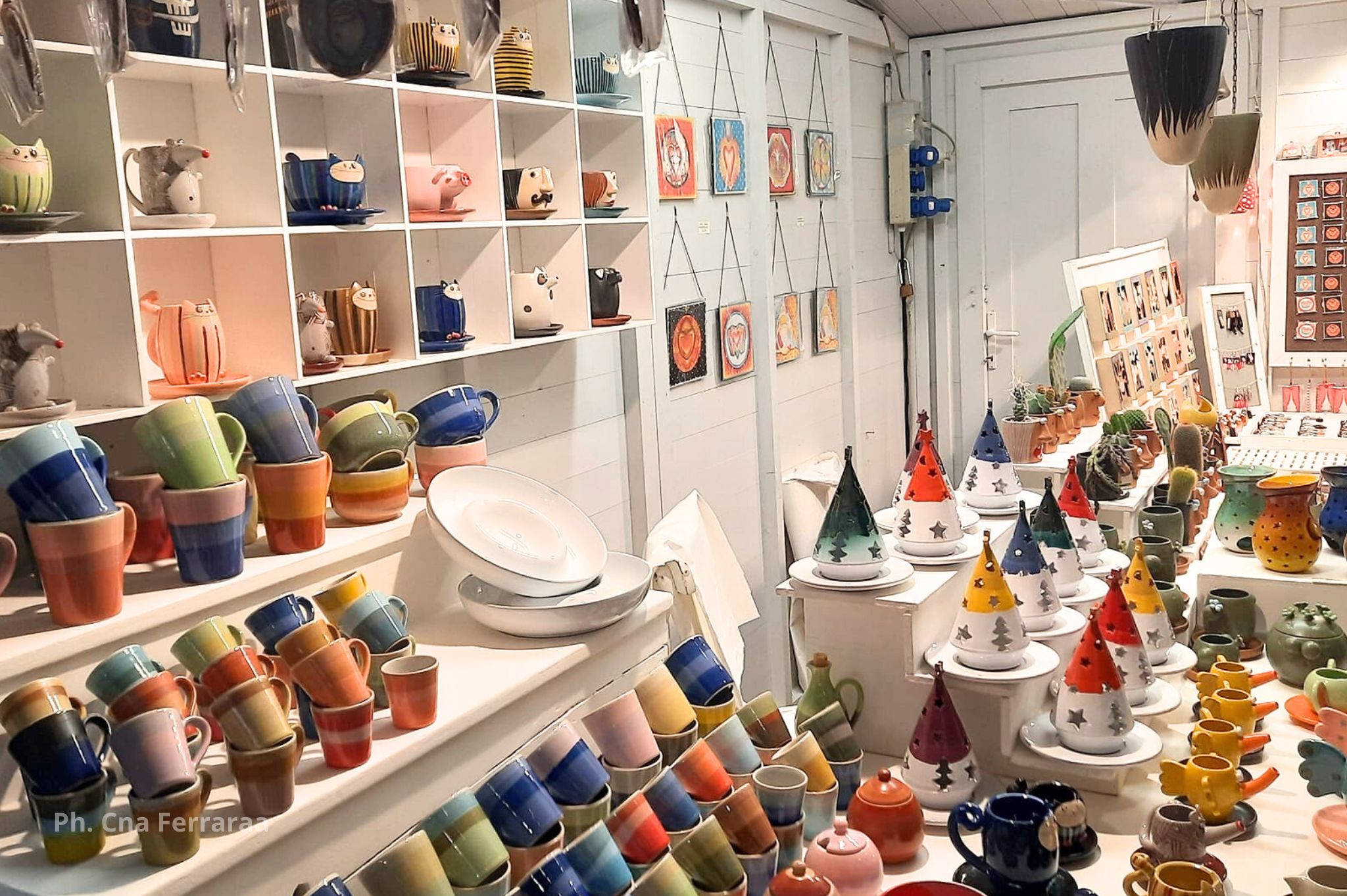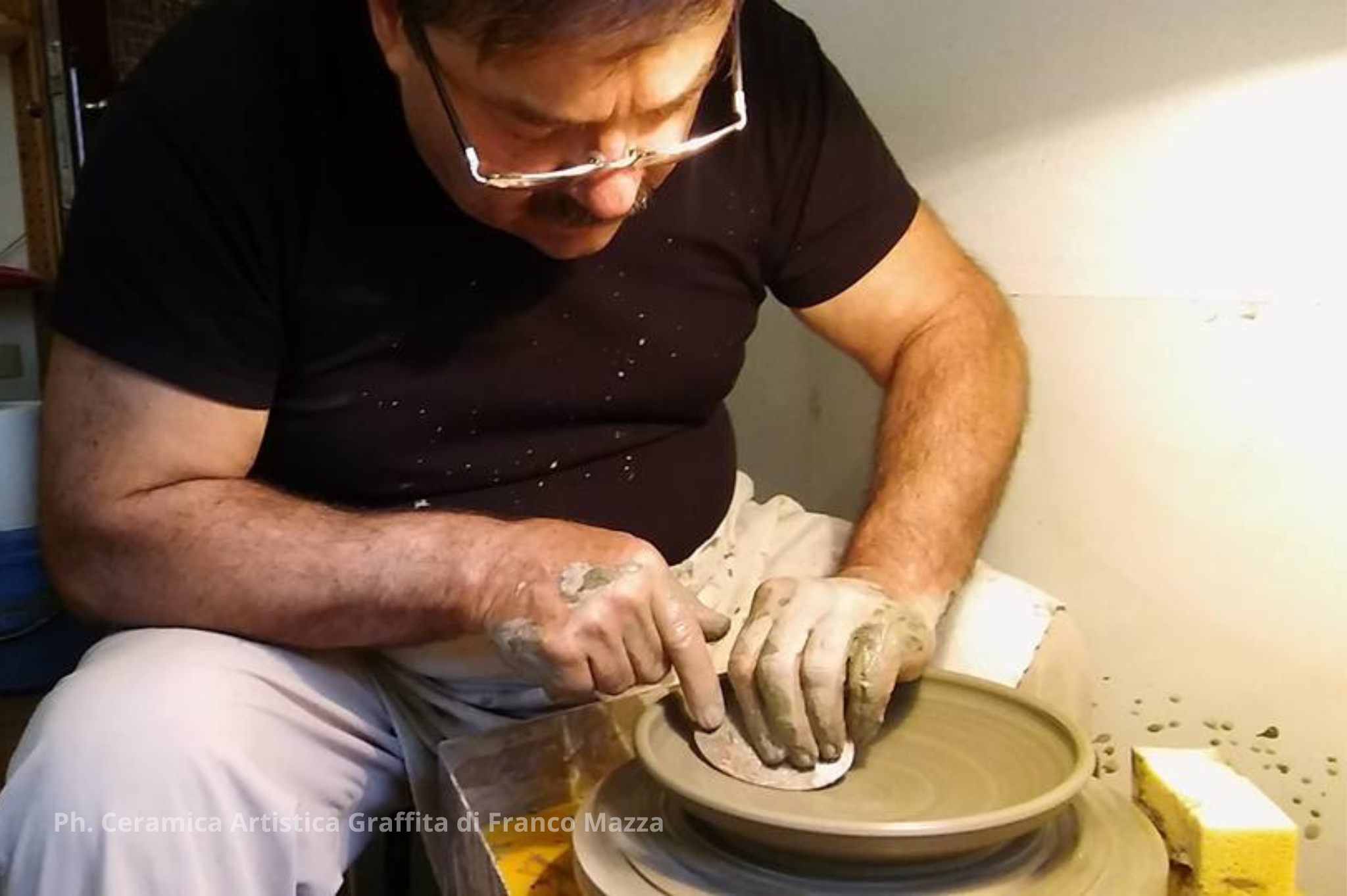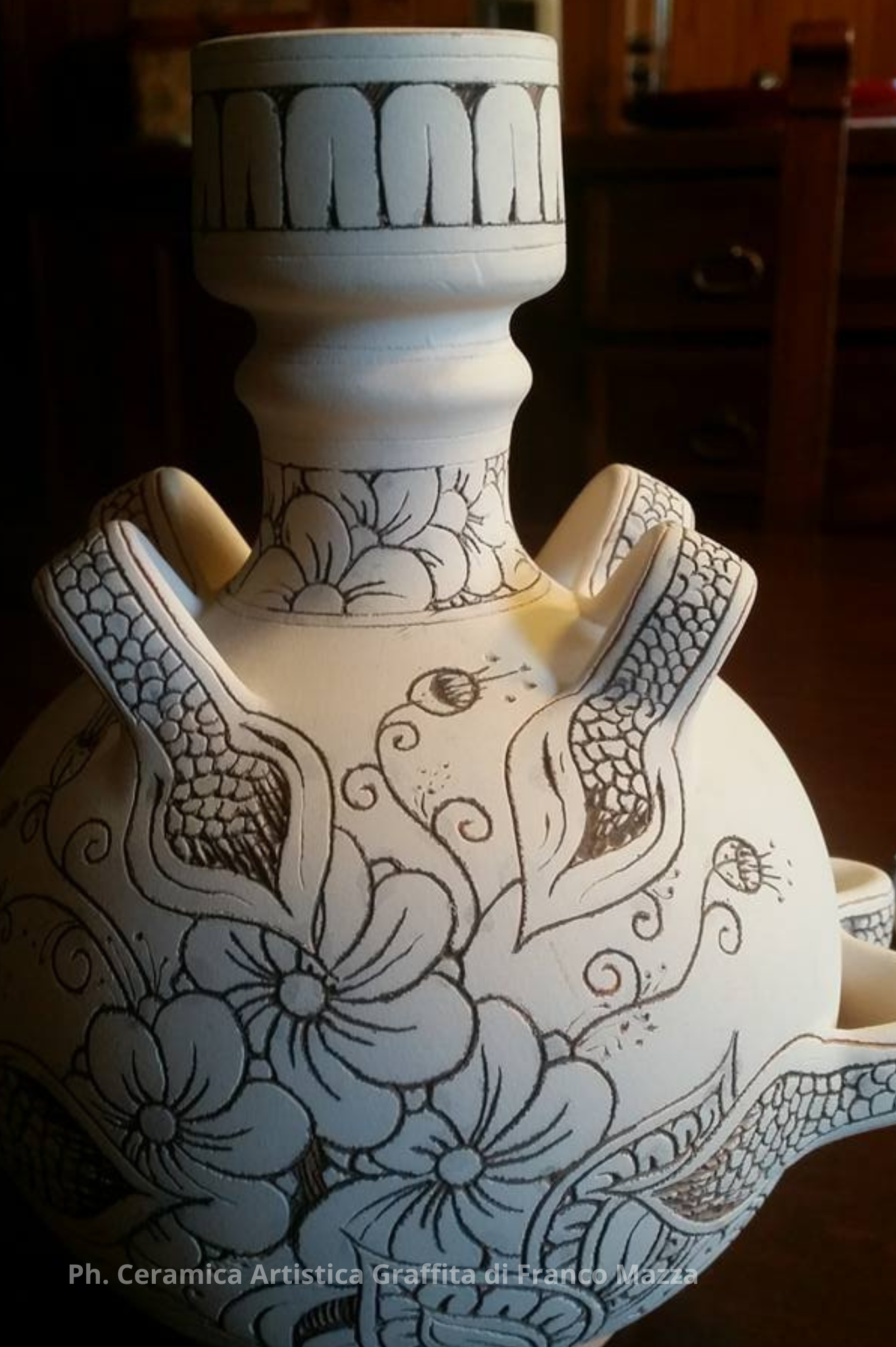Potrebbe interessarti anche

The art of Ferrara ceramics: the secrets of a centenary technique
Pottery is an art that has been present in Ferrara since ancient times, however, it was at the beginning of the 15th century that graffito ceramics - a new type that met with great success during the Renaissance period.
Graffito pottery
Graffito ceramics is a technique characterised by refined designs and sublime colour combinations. Through this delicate art, the vicissitudes of the court were narrated: even today it still represents an intimate testimony of the customs, characters and symbols of an entire era. One of the most important ceramic collections from the Este period is housed in Palazzo Schifanoia, have you already taken a trip to admire them? Here you will find a collection of over 800 valuable pieces made between the 14th and 17th centuries.
Pottery today


Various types of ceramics are produced in Ferrara today, and you will be able to admire them at the Ceramica in FEsta event organised by the CNA Ferrara (Confederazione Nazionale dell'Artigianato e della Piccola e Media Impresa) on 20 and 21 May. This is an excellent opportunity to discover with your own eyes this wonderful world at the hands of its craftsmen, in the very central setting of Piazza Trento e Trieste.
The art of Ferrara pottery - A living tradition
Among the art masters involved in the initiative is Franco Mazza, whose production pays homage to the graffiti technique and its glorious Renaissance past.
Franco Mazza's business is a family business: our meeting with him reveals the great love he feels for his work and the pride of someone who actively contributes to carrying on the tradition.
From a passion, into a profession
“It all started thanks to my wife, Chiara De Angelis. We both graduated from the Art Institute of Bologna, but after graduation my family moved to Ferrara to work in the world of agriculture and for a long time I set aside ceramics to dedicate myself to managing an agricultural cooperative. Then, in 2000, prompted by Chiara, I took up ceramics again and enrolled in the Register of Craftsmen Enterprises. Initially, we produced high-fire glaze, one of the most popular decoration techniques and the one I had studied for. Then we discovered the Ferrarese graffito technique, fell in love with it and began to study which colour shade was suitable. That was the key, colour!"

The value of Ferrara's graffita is in fact due to the decorative motifs, the most varied but above all floral, and to the tones of the colours that take on characteristics of absolute originality. This is how it works: on the ceramics while still raw, the engobe (a veil of white clay) is spread, which is engraved by freehand with a thin metal point, thus uncovering the layer underneath, which, when fired, will return the characteristic red colour. Then the ceramics are coloured with metal oxides and, in the second firing, partially glazed.
"After several long attempts, Chiara finally managed to get the right shade. We apply colours that are oxides: green, blue, yellow. Over time, in order not to be repetitive, we added red and blue."
What began as a game, became a profession also thanks to the CNA Confederation: we had renovated a farmhouse in Sant'Egidio, to have both the workshop and a space to welcome customers. A fantastic place, we had some wonderful years, experiencing enormous satisfaction. Ceramics has a very long working process: between the various phases it often takes up to a month and a half. There is a cycle to be respected: like the molecular transformation of the earth in firing or drying. One must respect the times and not force the pace if one wants an excellent product.






Who the pottery is actually baked for
"Our ceramics end up in many homes from the person who loves decorative objects for personal use to the person looking for precious pieces to give as gifts. Our entire production is inspired by the art of Ferrara: we use a local technique, we work in the city context, and it is only right that these details are present in our ceramics. With customers there is an incredible relationship, they often call us to thank us for the good impression they made by giving one of our objects as a gift. Sometimes, they walk past our stall and I hear them say 'hey, look a Mazza, I have one too'.
"Being an artisan means this: living from your passion and it is also nice and stimulating to compare yourself with other artisans. Here in Ferrara we have set up a group with which we organise arts and crafts markets: the appointment is the third weekend of every month, on the Listone."
A family tradition
"My son Massimo is the future of our business: my dream is to see him autonomous in running the workshop and just follow him for some advice."
The advice to young people? There is still room for those who want to take this art seriously! Aim for quality: that's what saves you and differentiates you from others.








